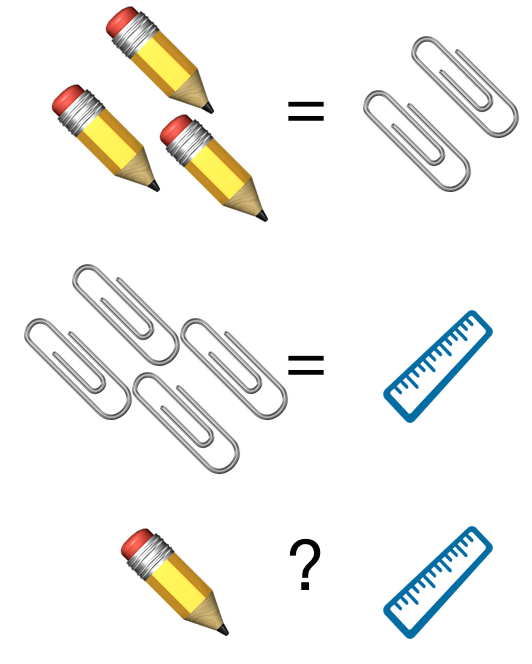Let's Barter!

Three pencils cost the same as two paper clips.
Four paper clips cost the same as one ruler.
Pencils are more expensive than rulers.
If the first two statements are true, the third statement is .
Note: Assume that each item costs some positive amount.
This section requires Javascript.
You are seeing this because something didn't load right. We suggest you, (a) try
refreshing the page, (b) enabling javascript if it is disabled on your browser and,
finally, (c)
loading the
non-javascript version of this page
. We're sorry about the hassle.
Let P , C , R denote the price of one pencil, one paper clip and one ruler respectively.
From the first sentence, we know that 3 P = 2 C .
From the second sentence, we know that 4 C = 1 R .
So we have two equations, let's subsitute one equation into the other:
4 C = 2 ( 2 C ) = 2 ( 3 P ) = 6 P , thus 6 P = 4 E = 1 R .
Rewriting this into a sentence tells us that 6 pencils cost the same as one ruler. In other words, that a ruler is worth 6 pencils, and so a ruler is more expensive than a rule. Hence, the third statement in question is false .